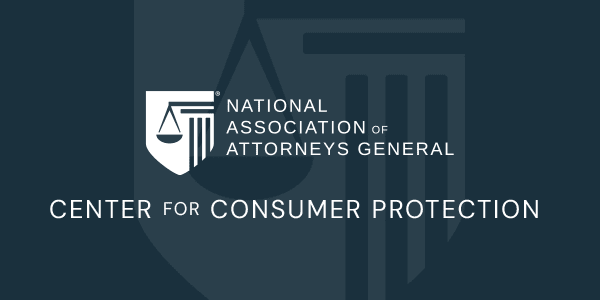 On January 14, 2021, the IRS promulgated final regulations in connection with the tax laws and reporting requirements found in 26 U.S. Code § 162(f) and 26 U.S. Code § 6050X which impact consumer protection settlements and state attorney general offices. These final regulations, found at 26 C.F.R. § 1.162-21 and 26 C.F.R. § 1.6050X-1, clarify several important questions about the applicability of these sections to particular types of settlements and provide important guidance to attorneys general on how to comply with the reporting provisions.
On January 14, 2021, the IRS promulgated final regulations in connection with the tax laws and reporting requirements found in 26 U.S. Code § 162(f) and 26 U.S. Code § 6050X which impact consumer protection settlements and state attorney general offices. These final regulations, found at 26 C.F.R. § 1.162-21 and 26 C.F.R. § 1.6050X-1, clarify several important questions about the applicability of these sections to particular types of settlements and provide important guidance to attorneys general on how to comply with the reporting provisions.
By way of brief background, the Tax Cuts and Jobs Act (“TCJA”) was signed into law on December 22, 2017. The TCJA, among other things, changed dramatically the treatment of money, for tax purposes, paid by businesses and individuals as part of consumer protection settlements or judgments with state attorneys general. The TCJA is broad in scope and applies to enforcement entities not just on the state level but also federal, territorial, or local enforcers. It also applies to resolutions in a variety of contexts including, but not limited to, environmental matters, securities law violations, and Medicaid fraud. Governmental entities fall under the TCJA, as do nongovernmental entities which exercise self-regulatory powers, such as enforcing rules or imposing sanctions, as part of performing an essential government function. See 26 C.F.R. § 1.162-21(e)(3).
Before the TCJA was passed, settling entities generally enjoyed a tax deduction for money paid to a state as part of a consumer protection settlement, unless it was paid as a civil penalty. Under the current version of 26 U.S. Code § 162(f), however, money paid as part of a consumer protection settlement cannot be deducted unless one of three exceptions is met. Importantly, these new tax restrictions apply as long as the money is paid “in relation to” any potential violation of law, not simply consumer protection laws, and regardless of whether a lawsuit is filed or the target of a governmental investigation admits to any misconduct. However, the TCJA does not apply when the attorney general or any governmental entity is enforcing its rights as a private party, such as in a breach of contract action. See 26 C.F.R. § 1.162-21(c)(1).
Tax Treatment of Settlement Payments Under the New Regulations
As noted, the TCJA does contain exceptions to its general rule that money paid to a state to settle or resolve a consumer protection matter is not deductible. First, restitution, either civil or criminal, for the harm caused by the violation or potential violation of any law may still be deducted. The purpose of restitution is usually to restore the injured entity to the same condition it was in prior to the harm. Under the final regulations issued by the IRS, disgorgement or forfeiture may be considered as restitution so long as the amount is not in excess of net profits and the money is not utilized for general enforcement efforts or other discretionary purposes. See 26 C.F.R. § 1.162-21(d)(4)(B).
The second exception is where the money is paid to remediate property, which most commonly arises in the context of environmental matters. However, there have been consumer protection cases which involved a significant environmental component. The remediation exception includes not only money paid to remediate a specific property or class of properties, but also remediation to the environment, wildlife, or natural resources generally. See 26 C.F.R. § 1.162-21(d)(4)(A).
The third and final exception involves money paid to come into compliance with the law, such as by performing specific services or taking specific corrective actions. To fall under this exception, there must be a nexus between the law for which compliance costs are incurred and the law that has been violated or potentially violated. In practice, the injunctive terms that are commonly part of a consumer protection settlement would give rise to this type of compliance costs. One important change in the final regulations permits a company to take advantage of meeting a higher standard than required by law and the injunctive terms negotiated with the states, as long as the extra money spent on compliance is otherwise deductible under the tax code. While the amount spent on compliance does need to be included in an attorney general’s filing with the IRS (AG filing obligations are discussed below), the attorney general is not required to verify the accuracy of this amount. However, nothing in the tax code would preclude a state from seeking this verification information from a settling company.
Both the TCJA and the final regulations make clear that money paid to any governmental entity, including the attorney general, to reimburse the costs of litigation or investigation is not a permitted deduction. See 26 U.S. Code § 162(f)(2)(B).
In addition to falling under one of these three exceptions, any money which a company wishes to deduct under this section must also be sufficiently identified and established. Pursuant to 26 U.S. Code § 162(f)(2)(A)(ii), the money must be identified as restitution, remediation, or cost of compliance in the court order, settlement agreement, or other document resolving the matter (such as an assurance of voluntary compliance). These precise terms do not need to appear in the order or agreement if the nature or purpose of the payment is described clearly and unambiguously and this purpose is either to restore injured persons or property to their original state, remedy harm suffered by taking action to restore the damage, or describes the manner of noncompliance and the specific actions or services performed to come into compliance with law. The order or agreement need not specifically allocate money among these three categories if it provides for a total payment of restitution, remediation, and cost of compliance.
While the identification requirement considers how the money paid is treated in the order or settlement, a company meets the establishment requirement by providing documentary evidence that there was a legal obligation to pay, the amount paid, the date, and that the funds were actually paid toward an approved, deductible purpose. See 26 C.F.R. § 1.162-21(b)(3). The identification requirement can be met by showing a total payment applied to the approved expenses, but for purposes of the establishment requirement, the precise amounts paid for restitution, remediation, or compliance costs must be specified. Providing sufficient evidence to meet the establishment requirement will be particularly critical where a company seeks to claim a deduction for money spent to satisfy the injunctive terms of a consumer protection settlement.
The types of matters to which these tax law changes apply include the vast majority of consumer protection investigations and litigation brought by state attorneys general, whether on their own or in a multistate case. However, not every investigation by any governmental entity falls under the scope of the TCJA. Routine investigations or inquiries, such as audits or inspections, if conducted to ensure compliance with rules and regulations rather than in response to suspected wrongdoing, do not implicate these provisions. See 26 C.F.R. § 1.162-21(a)(3)(ii).
One critical change in the final regulations involves the use of third parties to assist with providing restitution to injured consumers. The IRS has clarified that the same tax rules now apply regardless of whether the money is paid directly to the attorney general or at their direction. This would include money paid to a restitution fund which would make payments to impacted consumers. The IRS also addressed concerns that, in some cases, not all the money in a restitution fund can be used for restitution, as some consumers may not claim funds or cannot be located. In those cases, any leftover funds may be disbursed to the attorney general or the state for general use without changing the characterization of the money as restitution for tax purposes. However, if the leftover money is ultimately returned to the settling company, it will be required to include this amount as income in that year’s tax filing under the tax benefit rule. See 26 C.F.R. § 1.162-21(d)(2).
Attorney General and Other Governmental Entities’ Filing Requirements
In addition to the changes to the tax treatment of payments made, the TCJA created an obligation for attorneys general and other governmental entities to file an information return with the IRS when money is paid as part of a settlement or judgment. However, the reporting obligations only apply to governmental entities (and certain nongovernmental entities) of federal and state governments (including the District of Columbia) and political subdivisions, but not the territories.
Per the final IRS regulations, the reporting requirements apply only to orders and agreements which become binding under applicable law on or after January 1, 2022, regardless of whether appeals have been exhausted or the time to file an appeal has expired. See 26 C.F.R. § 1.6050X-1(g). For each company which pays money as part of a settlement or judgment, an “appropriate official” of the attorney general’s office must file Form 1098-F and Form 1096. This appropriate official can be either the attorney with control over the lawsuit or investigation or another person designated by the Attorney General, such as an individual in the finance department. See 26 U.S. Code § 6050X(c).
In addition to collecting information regarding the filing entity, the taxpayer, and the matter which was resolved, Form 1098-F requires the attorney general to designate the amount of money paid for restitution/remediation (these categories are combined on the form) and compliance. Interestingly, this form cannot be used to satisfy either the identification requirement or the establishment requirement. Providing this form enables the IRS to verify the information provided by the taxpayer on its own return, so that the IRS can ensure businesses and individuals are only deducting permissible payments.
These forms are due to the IRS by February 28 of the year following the year in which the order or settlement becomes binding if filed on paper, or by March 31 if filed electronically. However, the law also requires the governmental entity to furnish a written statement to the business or individual containing this same information by January 31. While the information furnished to the taxpayer does not need to be a copy of Form 1098-F, the best and easiest practice is to use this form, which already contains a page which can be filled out and sent to the business or individual.
The reporting obligations only arise for those parties to a settlement or judgment that have a payment obligation. In the event a lawsuit or settlement resolves a consumer protection settlement with multiple companies, and those companies each have payment obligations or share joint and several liability, a state would need to file Form 1098-F for each entity. However, if there is a settlement with multiple corporate entities, but only one entity assumes the payment obligation, Form 1098-F is only filed for that particular entity. In the event of a multistate settlement where all of the states are parties to one settlement agreement and the money is all going to one place, such as a restitution fund, the IRS regulations allow the state listed first to file a single return, or the parties can agree that another state such as the lead state would file. See 26 C.F.R. § 1.6050X-1(f)(ii). However, where the company enters into separate settlement agreements with each state, and those agreements provide for a monetary payment to that state, each state will need to file its own forms. In addition, only one form needs to be filed per payor for any particular matter, even if the payments are scheduled to be made over the course of several years.
The financial threshold which triggers the reporting requirements of 26 U.S. Code § 6050X and its associated regulations has been revised upward by the IRS from $600 to $50,000 and remains at that amount in the final regulations. See 26 C.F.R. § 1.6050X-1(f)(6). In some cases, the monetary obligations under an order or settlement may be indeterminate or contingent. In that event, the reporting requirement is still triggered only if the attorney general reasonably expects that the amount which the company will end up paying exceeds $50,000. See 26 C.F.R. § 1.6050X-1(e).
These tax law changes and reporting requirements will have a significant impact on settlement negotiations in consumer protection matters, as well as on a number of other types of cases brought by attorneys general or by other state agencies. A full understanding of these obligations will be necessary in order to properly advise both clients and front offices so that the tax filings correctly reflect the intent of the parties. The final regulations offer a number of examples which help to illustrate the general principles found in this article. See 26 C.F.R. § 1.162-21(f).
And if you would like to learn more about this subject, there will be a session during the NAAG Consumer Protection Spring Virtual Conference on May 11. Please watch the NAAG website for conference details.
Other articles in this edition include:
- Consumer Chief of the Month
- Attorney General Consumer Protection News
- Federal Consumer Protection News and Other Items of Interest






